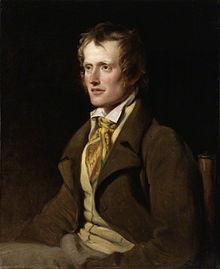After months of looking, I finally managed to acquire a copy of Bright Phoebus by Lal & Mike Waterson. It cost me deep in the purse though. I saw a 2CD copy in the auction on eBay. I bid and bid, but to no avail. I finally stopped bidding when it reached £45. “This is ridiculous”, I thought to myself. It sold for £51. I was so disappointed I looked on Amazon and saw a copy for sale for £36 and bought it. That is the second highest price I have ever paid for an album. The record is held by In Gardens Where We Feel Secure by Virginia Astley which I paid £44 for. I think Bright Phoebus has become much sought after since being mentioned in Richard Thompson’s book called Beeswing. Anyway, I am pleased I managed to find a copy. The album was originally released in 1972 in an edition of only 1,000 copies. The copy I have is a remastered re-release by Domino Records in 2017 and became the subject of a copyright dispute which might account for it being quite rare these days.
I must say they did a wonderful job with the design and packaging. It has a triple gate-fold sleeve and contains a fabulous booklet with the lyrics, an extensive essay by Pete Paprides which explains everything you might need to know about Lal & Mike Waterson and the story of how the album came into being, and some splendid photos, including one of Anne Briggs which I had not seen before. Martin Carthy had a lot to do with bringing the songs to the attention of Bill Leader who produced the album. It was recorded in one week at Cecil Sharp House in London. The list of musicians who played on the album reads like a Who’s Who of the British folk scene of the 70s. Richard Thompson, Norma Waterson, Tim Hart, Ashley Hutchings, Maddy Prior, Dave Mattacks, Martin Carthy, Bob Davenport, and many others appear on the twelve tracks along with Mike and Lal. Let us have a look at the songs.
Rubber Band is the opening song. Some critics have described this album as Folk music’s Sergeant Pepper, and I can see that link with this jolly opening song which has a huge array of instruments including trombone and Jew’s harp. The lyrics are comical, clever word play. The Scarecrow is completely different. One person compared it to an Ingmar Bergman film. It has a pre-Christian pagan feel to it with hints of human sacrifice. It is sung by Mike & Lal with just Richard Thompson and Martin Carthy on acoustic guitars. I know Fine Horseman because Anne Briggs also recorded it. Lal sings and wrote this song. Her hero was the French poet Arthur Rimbaud, and I think you can see the influence in Lal’s sometimes enigmatic lyrics. I wonder if Winifer Odd might have been influenced slightly by Eleanor Rigby. It is a strange song about a lonely tragi-comic person who spends their life waiting for something to happen, and it never does. Danny Rose is a kind of rockabilly song about a gangster who comes to a sticky end. Lal wrote Child Among The Weeds after her son Oliver was born. All the songs on the album are original compositions, but many of them, like this song sound like traditional ballads that have been around for hundreds of years. If this album is Folk’s Sgt Pepper, then I think The Magical Man is the equivalent of ‘For The Benefit Of Mr Kite’ with it’s circus and Victorian Music Hall imagery. There are twelve musicians on this track.
The next two songs are much simpler arrangements featuring just Lal and acoustic guitars, cello, and bass. Never The Same is a scary vision of a post-apocalypse world. To Make You Stay is a simple song about loss which does stir the same emotion as ‘She’s Leaving Home’. Shady Lady by contrast features lots of singers and splendid lead guitar by Richard Thompson. Lal wrote Red Wine Promises after she went out to the pub for the night. On the way home she tried to leap-frog over a traffic bollard and fell flat on her back. The song is about her telling herself off for her behaviour. Mike was up a ladder working as a house painter when the sun came out. The words of the title track Bright Phoebus came to him there and then. He had to go home and write it all down. I did not know what Phoebus meant, so I looked in Collin’s English Dictionary, and it said, also called: Phoebus, Apollo Greek mythology, Apollo as the sun god, poetic, a personification of the sun. So there!
I have enjoyed listening to the other CD nearly as much as Bright Phoebus, which is demo recordings made the previous year. The quality is surprisingly good, and I liked the stripped back sound of the songs. There are also three songs which were not included on the original album. Sadly, Lal Waterson died in 1998 and her brother Mike Waterson passed away in 2011. They have left a great legacy and I am sure that their legend will continue to grow in the years to come.



































